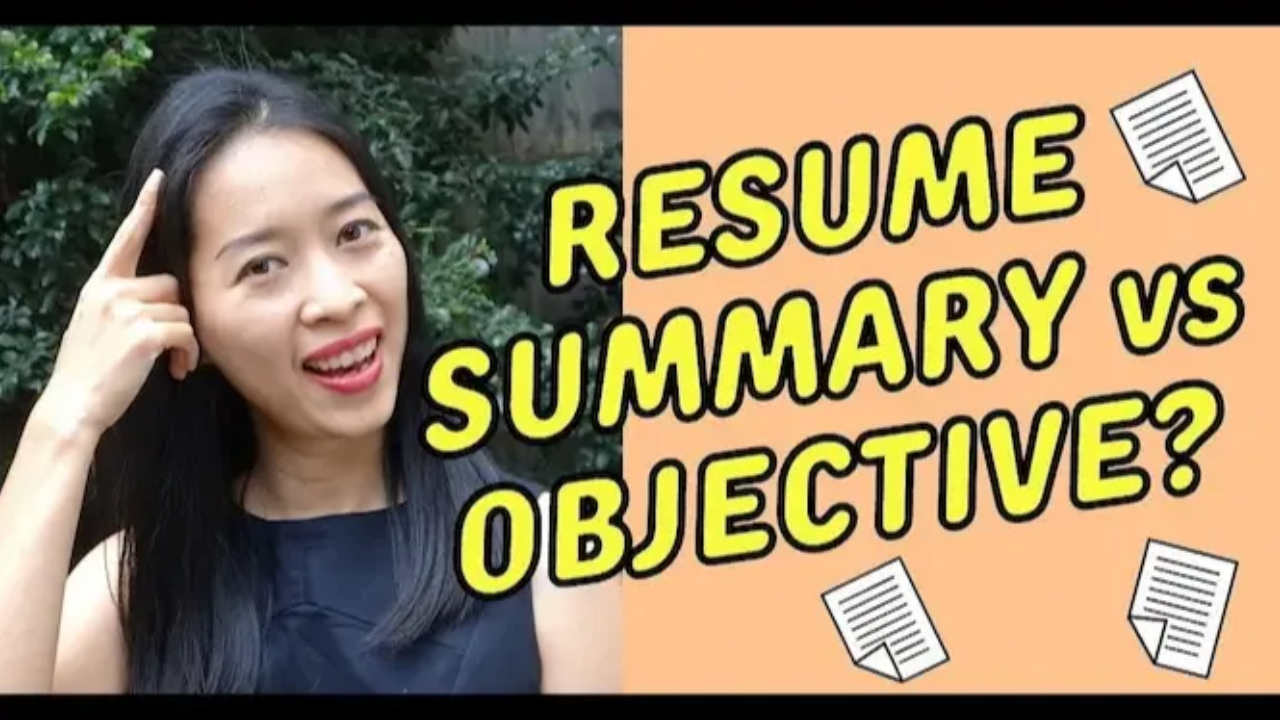Resume Summary vs Objective: What Gets Interviews (and What Doesn’t)

Not sure whether to use a resume summary or an objective?
You’re not alone. Many job seekers — especially international students and migrants — wonder what to put at the very top of their resume. That first section is prime real estate, and what you write there can determine whether a recruiter keeps reading or moves on to the next candidate.
In this guide, I’ll break down the real difference between a resume summary and an objective, explain why one works far better than the other, and show you exactly how to write a top section that gets interviews.
What’s the Difference Between a Resume Summary and an Objective?
Although both appear at the top of a resume, they serve very different purposes.
Resume Objective – Talks about what you want.
Example: “Looking for a marketing role where I can grow my skills and work in a creative team.”
It focuses on your goals, such as the type of role you want, the skills you hope to develop, or the environment you’d like to work in.
Resume Summary – Focuses on what you offer.
Example: “Marketing graduate with hands-on experience in paid campaigns and content creation, growing social media reach by 40%.”
It highlights your skills, experience, and achievements — showing employers how you can benefit them.
The key distinction: Objectives are about your benefits. Summaries are about the employer’s benefits.
Why Recruiters Prefer a Summary
Recruiters and hiring managers spend only a few seconds skimming your resume — research suggests around six seconds on the first pass. They scan the top section first to decide whether to keep reading.
An objective tells them what you’re looking for. That’s useful if you’re making a big career change or have no experience at all, but in most cases, it doesn’t answer the question they’re really asking:
“What can this candidate do for our company?”
A summary, on the other hand:
- Presents your strongest skills and experience upfront
- Demonstrates your value with achievements
- Immediately aligns you with the job requirements
It’s like a movie trailer — it grabs attention and convinces the audience to watch the whole thing.
Objective vs Summary Examples
Objective (❌ Not Recommended):
“Seeking a full-time marketing role where I can grow my skills and contribute to a dynamic team.”
Why it doesn’t work: It’s vague, self-focused, and says nothing unique about your qualifications.
Summary (✅ Recommended):
“Marketing graduate with hands-on experience running paid campaigns and growing social media reach by 40%. Skilled in Canva, Meta Ads, and content strategy.”
Why it works: It shows relevant skills, measurable results, and immediately positions you as a capable candidate.
When Is an Objective Acceptable?
There are two situations where an objective can be useful:
- Career changers – If your background is in a completely different field, an objective can clarify your new direction.
- No work experience – If you’re fresh out of school or have minimal experience, an objective can explain your career goal.
Even then, avoid making it purely about your goals. Include skills or strengths that are relevant to the employer.
Example for a career changer:
“Recent engineering graduate transitioning into data analytics. Skilled in Python, Excel, and storytelling with data. Eager to apply analytical skills to business problems.”
How to Write a Strong Resume Summary
If you want your resume to stand out, invest time in crafting a compelling summary. Keep it concise — about 3–5 sentences or bullet points — but make every word count.
Here’s a step-by-step approach:
- Start with your professional headline
Clearly state your role or area of expertise, along with years of experience if relevant.
Example: “Engaging customer service representative with 5+ years in fast-paced retail environments.”
- Add your key skills
Choose the top three to five skills that match the job description and are supported by your experience.
Example: “Skilled in conflict resolution, upselling techniques, and CRM management.”
- Show achievements with numbers
Whenever possible, quantify your results to add credibility.
Example: “Consistently exceeded sales targets by 15% and improved customer retention by 20%.”
- Tailor it to the role
Read the job ad carefully and mirror its keywords (without overstuffing). This not only shows relevance but also helps with Applicant Tracking System (ATS) scans.
Common Mistakes to Avoid
- Being too vague: Avoid generic statements like “hardworking team player.”
- Listing every skill you have: Focus on the ones most relevant to the job.
- Copying the job ad word-for-word: Recruiters can spot this instantly — add your unique achievements.
- Skipping the summary entirely: Without it, the hiring manager may have no context for the rest of your resume.
Final Recommendation: Choose a Summary Over an Objective
If you’re serious about getting interviews, use a resume summary. It shifts the focus from what you want to what you can give — and that’s what employers are looking for.
A well-written summary:
- Grabs attention immediately
- Sets the tone for the rest of your resume
- Improves your chances of making it past the first skim
Choosing the wrong top section could cost you an interview. Choosing the right one could be the difference between getting ignored and getting a call.
Want a Resume That Gets Interviews?
The easiest way to start is with a proven template.
Download the Skilled Job Starter Kit — designed for international students and migrants.
Inside, you’ll get:
- A resume template with a professional summary section
- LinkedIn tips to boost your visibility
- Interview scripts that build confidence
👉 Get it free here: https://www.theaho.co/free
FAQs
What is better — resume summary or objective?
A summary almost always works better because it shows your value to the employer right away.
Can I include both?
No — pick one. A summary is the better choice in most cases.
How long should a resume summary be?
Keep it to 3–5 sentences or bullet points. Include your role, top skills, and measurable results.


